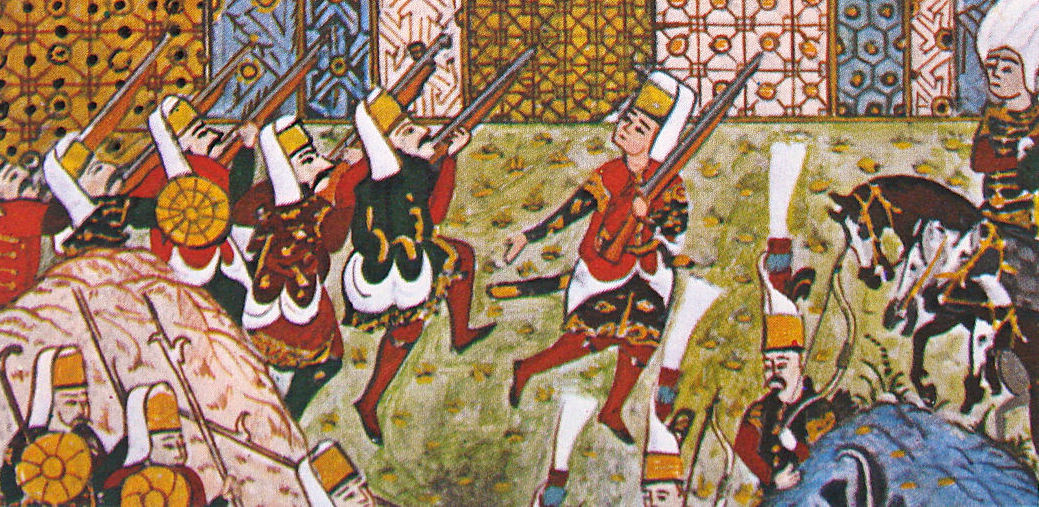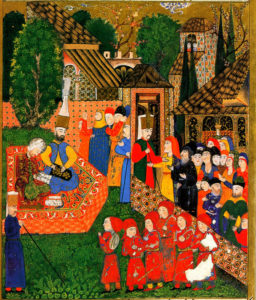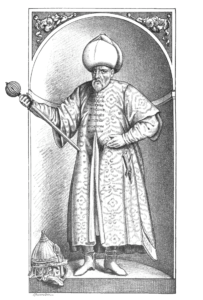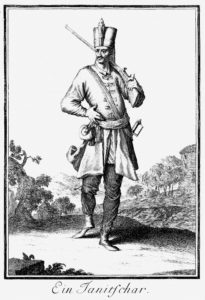
The Slaves Who Ruled an Empire
Before the ink on the surrenders were dry in the Ottoman conquest of the Balkans, they began demanding a very special tribute from the inhabitants of the area – their children. As the founder of the Janissaries, Candarli Kara Halil Hayreddin, said:
The conquered are slaves of the conquerors, to whom their goods, their women, and their children belong as lawful possession.
The Devshirme, which is translated as “blood tax” or “blood levy”, was the taking of rural and village boys between the ages of 8 and 20 from Balkan Christian families. There were some rules associated with this: the boys had to meet rigid standards for intellect, personality, and physical perfection. They could not be circumcised or married. Only Christian boys were collected – no Jews, Roma, or Muslims. No only-sons or orphans would be collected, nor the sons of tradesmen or people in cities. They could not have already learned Turkish or begun learning a trade.

The Devshirme was hated by the people subject to the periodic collection of children – and it is not hard to understand why. From the first moment a Janissary official appeared to the local priest to ask for the baptism rolls within the required age groups, parents knew that they stood a good chance of losing their children forever.
Parents were ordered to bring their sons to a central village square or gathering point, being forced to deliver their own children to the people who would steal them away. They stood and watched as the selections began.
They weren’t without all hope, though. The Ottomans would take only the best children – any boy with an imperfection in looks or intellect would be passed over. Balkan parents, desperate to keep their children, were not above physically disfiguring them, circumcising them, or marrying them off at extremely young ages.
Such a deep trauma, striking at the very core of religious groups by physically seizing their future, left wounds that lasted for hundreds of years. The first devshirme took place in the late fourteenth century, and the devshirme was mentioned as an evil to be avenged in the Balkan Wars of the 1990s, 600 years later.
Balkan literature after the Devshirme does not entirely discount the positive effects, however. Children seized in the Devshirme tended to return later to their home areas – endowing schools, libraries, and public buildings. They returned some of the largesse of the Janissary corps back to their native homes. The famous Bridge Over the River Drina was the gift of a son selected in the Devshirme who later found his home and wanted to show his lasting connection to and appreciation for his roots.

The children taken in the Devshirme would be set into one of four paths upon reaching Istanbul, the most famous of which (and the impetus for the Devshirme in the first place) was the Janissary corps.
Sultan Murad I had a problem in the late 1300s: his problem was that the tribalism and competing loyalties of the hereditary Turkish nobility were tearing his empire apart before it was really getting started. He needed to find a way to counteract the warring and scheming nobles surrounding him so he could get on with the business of conquering Europe. It was the Ottoman Kul (slave class) that inspired him. If he could take children when they were young enough, educate them and indoctrinate them into the system he was creating, and then keep them from developing any outside loyalties – he would have a system of warriors and public administrators whose sole loyalty was to the Sultan. He would forbid them from marrying – so they would have no sons whose futures they were trying to secure. He would forbid them from having any trades outside his service – so they would not have any loyalties outside the palace. They would be trained within the Sultan’s service from the youngest ages, and so would only see themselves as members of the Sultan’s household, and this school and training would last fourteen years, more than half their lives and in the most formative years.
Finally, the children would grow up and, fully indoctrinated into the Ottoman way of life, return to positions in their lands of origin and act as living bridges between the conquering state and the Slavs that had been conquered.
But all of this depended upon the ability to select and take the best children in the Balkan areas into slavery and then convert them to Islam. Thus the Devshirme developed.
The Janissaries, as envisioned by Murad I, would develop from the Devshirme and be an elite fighting force loyal only to him. It would also be the first modern professional army in Europe.

Although they were technically slaves, the Janissaries were also paid regular salaries. They advanced through the ranks on a meritocracy system and reached the highest ranks of the Ottoman ruling class. In fact, as the Devshirme became more established, some parents in Bosnia began to see it as an opportunity for advancement, and would attempt to bribe the Janissary collecting officers.
The sixteenth century was the golden age for the Janissaries. Their discipline and loyalty were unmatched, and thanks to their education they were able to assist the Sultan in leading the Empire in expansion and advancement. They were technically slaves, but they had become a ruling class, second only to the Sultan.
It wasn’t long before Turkish nobles were clamoring to get their children into the powerful Janissary corps, and it didn’t take long after that before standards were relaxed and previously forbidden activities like getting married became accepted. The famed discipline and loyalty of the Janissaries began to evaporate, and by 1632 an unsuccessful coup led to the previously unthinkable institution of a loyalty oath.
By 1648 the Devshirme system came to an end, and the very thing that had unified the various ethnicities in the empire and founded a loyal and honest Janissary corps was abolished. Although the Janissaries held on until 1826, they became increasingly bureaucratic, averse to modernization, and corrupt.
It was probably karmic justice that a system that began with kidnapping children and forcing them to convert would end violently. The Auspicious Incident in 1826 was Sultan Mahmoud II ’s attempt to rid himself of a reactionary and cumbersome relic of the once mighty Janissary corps. The Sultan purposefully incited a Janissary rebellion by hiring modern European gunners, and then used the rebellion as an excuse to crush them. Thousands were killed as they rioted, and as the dust cleared the Sultan executed 6,000 more. While this removed the immediate issue, it gave the rural Balkan Christians the excuse they needed to exhibit the hostility tamped down for over two hundred years as they watched their children being snatched away and stripped of their ethnic, religious, and cultural heritage. Without the bridge provided by Slavic Janissary Muslims and without children being held hostage by the Ottomans, the rural Balkan Christians no longer had any strong incentive to continue to behave.
So they didn’t.
It was the beginning of the end of the Ottoman Empire in the Balkans.
- May 20, 2020
- Bosnia and Herzegovina
